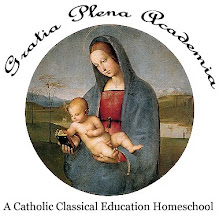We've been using some of our new curriculum for several weeks now - and some sources we just started using today. I thought I would give a brief review of what we've been using so far.
Saxon Math 2
Casey just started this one today. I'm a bit disappointed with it after just one lesson. I realize it is important for her to review what she's already learned, but after doing lesson one then flipping through the book, it appears that she won't be learning much that is new. Math is already a tedious subject for both of us; I feel as though I'm looking down the barrel at 131 remaining lessons of review that may prove to be extremely boring for both of us. On the bright side, I do like the Saxon 2 Meeting Book, so there's something to look forward to, I suppose.
Rod & Staff English 2
I love it. Casey hates it. She hates it so much that she wants to do it before Phonics (which has always been the last thing we do). I think it's all of the writing she's not fond of. She didn't complain too much today, but there have been times that I've feared tears. Fortunately, she's never shed a tear about doing home school work, but I think we've come close with English. I like the layout of the book - although I (in all honesty) get tired of the repeated references that "God made the sentence to ____________." It's a very bland, colorless book - even the cover of the book is brown, but I like the detail and constant review of concepts held within. Casey will just have to suffer.
Rod & Staff Phonics 2
Casey's next least favorite subject, but I like it because she can work independently on this while I work with Will on his reading. Each lesson has two worksheets to be completed - very picture-intensive and relatively self-explanatory. While I have the teacher's manual, I rarely use it.
Rod & Staff Spelling 2
I made the switch from Seton Spelling (used last year) to R&S. I'm glad I did. The teacher's book is a fabulous reference for ideas to engage the child with the words for each lesson. There are exercises, drills and practice tests to do before the week's spelling test is administered. Seton was pretty and I do miss the full-color religious artwork, but R&S is far more practical for the purpose of teaching spelling.
Faith & Life - Jesus Our Life (for Grade 2)
Again, another switch from Seton and another switch I'm glad to have made. While a bit more costly than the Seton Religious Education series, each year of Faith & Life provides a Teacher's Manual (loaded with discussion points, prayer suggestions, answer keys, quizzes and tests, and teacher-only insight to the material), a Student Book and an Activity Book. Casey loves the Activity Book and tends to work beyond a given day's lesson. I do our religion lesson while we're eating lunch - all of the children are attentive during meal times, so Will and Tricky also participate in the discussion of the material. We're all very happy with learning more about Catholicism.
New American Cursive
I researched over a dozen cursive instruction guides and I chose the NAC method. I like the overall simplicity of most of the letters - for example, the capital cursive F looks like an F rather than being virtually identical to the capital cursive T (something that caused me great frustration as a child). Casey is exciting to be learning a new way to write - pretty, curly writing.
Story of the World 2
We're doing SOTW again this year, but I'm using this along with another history book for the same time period, that being the Middle Ages and the Reformation. Being Catholic, I wanted to be careful about the onesidedness (that being a slant toward the Protestant side) I've seen in a lot of history texts including SOTW2. So, I chose...
Story of the Middle Ages by Christine Miller
SOMA, while perhaps being a bit better suited for the Logic Stage learner, provides the information I feel is missing from SOTW2. The focus is more on the history on the British Isles (where most of the meatier happenings of the Middle Ages took place, IMHO) than on the worldwide range of SOTW2. The children have enjoyed the narrative of SOMA, especially the stories of the saints. Both sources used together are providing the history that I want to teach the kids.
Classic Worktexts
So far, Casey has read Little Women and The Prince and the Pauper. Each worktext conodenses and subdivides each classic into ten chapters. With each chapter there is a vocabulary list (with definitions and use examples), a picture, a page of reading, multiple choice questions, and a page of puzzles and exercises for the vocabulary learned.
Blurred Edges
9 years ago









3 comments:
Although I don't anticipate home schooling, I appreciate the heads up about curriculum you find helpful. You never know. . . on another note, how are you feeling?
thanks for all the info Angela! its really great to year what u think & KC's reaction too.
Question there where several u weren't too keen on but are going to use anyway. Why is that?
I hav a blog I need to send you the link to!
Have you looked at Singapore Math? Both my girls (K and 2) absolutely love it, and beg to do more math! And as a certified teacher, I really like the way concepts are presented (as opposed to just teaching math processes) so that each concept anticipates what the students will learn down the road. I had a spectacular math education professor, and SM is by far the closest I've seen in homeschool curriculum programs to the things she taught us.
Post a Comment